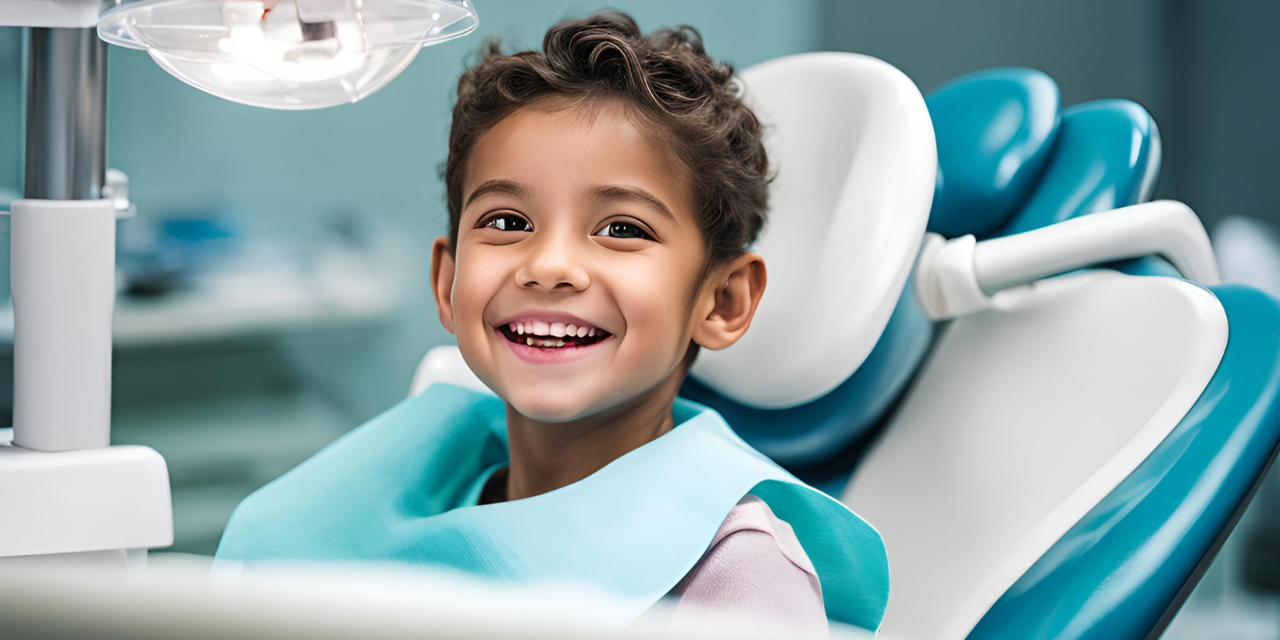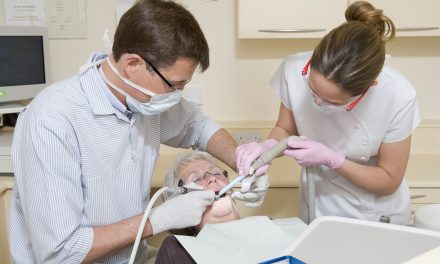Dental Health Month is a great time to teach kids about taking care of their teeth. Fun crafts and activities can make learning about oral hygiene exciting.
Kids can enjoy making tooth-themed art projects while picking up important lessons about brushing and flossing.

There are many creative ways to explore dental health with children.
Some ideas include painting with toothbrushes, making tooth fairy pillows, and creating food collages to show which foods are good or bad for teeth.
These hands-on projects help reinforce key concepts about keeping teeth clean and healthy.
Teachers and parents can use these crafts to start conversations about going to the dentist, proper brushing techniques, and why we need to take care of our teeth. The goal is to make dental health fun so kids develop good habits early on.
Key Takeaways
- Crafts and activities make learning about dental health fun for kids
- Hands-on projects help reinforce important oral hygiene concepts
- Creative dental-themed activities can build good habits early in life
Understanding Dental Health Month
Dental Health Month promotes good oral hygiene habits and raises awareness about dental care. It focuses on educating people about the importance of maintaining healthy teeth and gums.
History and Significance
Dental Health Month began in the 1940s as a week-long event. It later expanded to a full month in 1955. The American Dental Association (ADA) leads this annual celebration each February.
The month aims to teach people of all ages about proper dental care. It stresses the need for regular dental check-ups and daily brushing and flossing.
Schools often use this time to teach kids about oral health. They may invite dentists to speak or do fun dental health crafts.
Dental offices may offer free screenings or discounts during this month. This helps more people get needed dental care.
Events and Awareness Initiatives
Many groups host events for Dental Health Month. These include dental clinics, schools, and community centers.
Common activities include:
- Free dental screenings
- Oral health workshops
- Tooth-brushing demonstrations
- Dental health crafts for kids
- Contests promoting oral hygiene
Some dentists visit schools to teach about dental care. They may bring models of teeth or fun tools to engage kids.
Libraries often create displays with books about dental health. They might also host story times with tooth-themed books.
Social media campaigns spread dental health tips. These often use hashtags like #DentalHealthMonth to reach more people.
Fundamentals of Dental Hygiene
Good dental hygiene habits are key to keeping teeth healthy and strong. These habits include proper brushing, regular flossing, and visiting the dentist.
Brushing Techniques
Brushing teeth is a basic but crucial part of dental care. Use a soft-bristled toothbrush and fluoride toothpaste. Brush twice a day for two minutes each time.
Hold the toothbrush at a 45-degree angle to the gums. Use gentle, circular motions to clean all surfaces of the teeth.
Don’t forget to brush the tongue too. This helps remove bacteria and freshen breath.
Electric toothbrushes can be more effective than manual ones. They often have timers to ensure proper brushing duration.
Replace toothbrushes every 3-4 months or sooner if bristles are frayed.
Flossing Essentials
Flossing removes plaque and food particles from between teeth where toothbrushes can’t reach. It’s best to floss at least once a day.
Use about 18 inches of floss. Wind most of it around one middle finger and the rest around the other middle finger.
Guide the floss gently between teeth using a rubbing motion. Never snap the floss into the gums.
Curve the floss around each tooth in a C shape. Slide it up and down against the tooth surface and under the gumline.
Use a fresh section of floss for each tooth to avoid spreading bacteria.
Regular Dental Check-Ups
Dental check-ups are vital for maintaining oral health. Visit the dentist every six months for a cleaning and check-up.
During these visits, the dentist will:
- Clean teeth professionally
- Check for cavities
- Look for signs of gum disease
- Examine for oral cancer
Regular check-ups help catch problems early, before they become serious. They also allow for personalized advice on improving dental care habits.
Don’t wait for pain or problems to see a dentist. Prevention is always better than treatment.
Crafts for Dental Health Education
Crafts help kids learn about dental health in a fun way. They can make tooth-shaped projects, create models with egg cartons, and improve their fine motor skills.
Tooth Craft Projects
Kids can make tooth-shaped crafts to learn about dental health. They can use paper plates to create smiling mouths with teeth. Another idea is making a lost tooth pillow. This helps kids get excited about losing teeth.
Cotton balls work great for making tooth models. Kids can glue them on paper to form a big tooth shape. They can then color parts of the tooth to show decay or cavities.
Painting with toothbrushes is a fun way to make tooth art. Kids dip toothbrushes in paint and brush on paper tooth shapes.
Creating Egg Carton Teeth
Egg cartons make great tooth models. Cut egg cartons into strips to look like rows of teeth. Kids can paint them white to look more real.
Use play dough as “plaque” between the egg carton teeth. Kids can practice flossing using yarn to remove the play dough. This teaches proper flossing technique.
Kids can also brush the egg carton teeth with real toothpaste. It’s a good way to practice brushing motions and learn about different toothpaste flavors.
Developing Fine Motor Skills Through Crafting
Dental crafts help kids build fine motor skills.
Cutting paper for tooth shapes improves scissor skills. Gluing small items like beans or beads onto tooth outlines boosts hand control.
Painting with toothbrushes helps kids practice holding tools correctly. This skill transfers to real tooth brushing.
Making play dough teeth lets kids mold and shape with their hands. They can make teeth, then use toothpick “floss” to clean between them. This activity improves finger strength and dexterity.
Activities to Reinforce Oral Hygiene
Fun activities can help kids learn good dental habits. These games and crafts make oral care exciting for children.
Teeth Brushing Charts and Games
Teeth brushing charts are great tools to track daily brushing.
Kids can place stickers or check off boxes each time they brush. This visual reminder encourages consistent habits.
A “Race to Lose a Tooth” game adds excitement.
Kids can color in or mark off teeth on a chart as they brush. The goal is to “lose” all their teeth first by brushing regularly.
Digital apps and timers can make brushing more engaging. Many play music or show videos for the recommended two-minute brushing time.
Interactive Dental Health Activities
Hands-on activities help kids understand oral hygiene better.
Playdough crafts let children mold teeth and practice “brushing” with small toothbrushes.
Sorting games teach kids about healthy and unhealthy foods for teeth. They can group pictures or toy foods into “good for teeth” and “bad for teeth” categories.
Tooth experiments show the effects of different drinks on teeth.
Kids can soak eggshells in various liquids to see staining and decay. This visual lesson reinforces the importance of avoiding sugary drinks.
Promoting Dental Health in Preschoolers
Teaching young children about dental health can be fun and educational. Hands-on activities and creative projects help preschoolers learn important habits for keeping their teeth clean and healthy.
Sensory Play for Dental Awareness
Sensory play is a great way to teach preschoolers about dental health.
Playdough crafts let kids make tooth shapes and practice “brushing” with plastic toothbrushes. This builds fine motor skills while learning about oral care.
Shaving cream “toothpaste” activities are another fun option.
Kids can practice brushing giant cardboard teeth with shaving cream and toothbrushes. This teaches proper brushing motions in a messy, engaging way.
Water play with plastic teeth models and floss helps demonstrate flossing.
Kids can remove “food” (like pom poms) stuck between the teeth using yarn or string as pretend floss.
Engaging Coloring Pages and Themes
Dental health coloring pages are a simple way to reinforce good habits.
Pages showing children brushing, flossing, and visiting the dentist help normalize these activities. Tooth-themed coloring sheets can also teach about different types of teeth.
Reading dental health books is another great option.
Stories about visiting the dentist or the Tooth Fairy can ease fears and spark interest in oral care. Look for preschool-friendly books with bright pictures and simple text.
Dentist dramatic play areas let kids act out dental visits.
Set up a pretend dentist chair, tools, and patient gowns. This helps children become more comfortable with dental checkups through play.
Teaching Kindergarteners About Dental Care
Dental health education for kindergarteners can be fun and engaging. With the right activities, young children learn the importance of proper oral hygiene.
Storytime and Dental Health Books
Reading books about dental health is a great way to teach kids.
Brush Your Teeth Please by Jean Pidgeon is a popular choice. It uses simple language and colorful pictures to explain brushing.
Teachers can also use puppet shows to tell stories about tooth fairies or cavity-fighting superheroes. These tales make dental care exciting for young minds.
After story time, kids can draw pictures of healthy teeth or make tooth-shaped art. This helps them remember what they learned.
Interactive Oral Hygiene Demonstrations
Hands-on activities help kindergarteners understand dental care better.
Teachers can use egg carton “teeth” with play-dough “plaque” to show proper brushing and flossing.
Kids can practice brushing on large tooth models. This teaches them the right motions and how long to brush.
A fun experiment involves soaking eggs in soda overnight. This shows how sugary drinks affect teeth. It’s a simple way to explain why brushing is important.
Teachers can also set up stations where kids brush painted “teeth” on paper with real toothbrushes. This makes learning feel like play.
Integrating Oral Health With Creativity
Dental health education becomes fun and memorable when combined with creative activities.
Kids learn best through hands-on projects that spark their imagination and engage their senses.
Dental Collage Workshops
Dental collage workshops let kids explore oral health topics in a visual way.
Teachers can set up stations with cut-out pictures of healthy foods, toothbrushes, and smiling mouths.
Kids pick images to glue on paper to make a dental health collage.
Tooth collages help kids learn about good and bad foods for teeth. They can sort pictures into “tooth-friendly” and “cavity-causing” groups. This reinforces which foods help or hurt dental health.
Collages also work well for showing proper brushing technique.
Kids arrange pictures of toothbrushes, teeth, and toothpaste to demonstrate correct brushing motions and amount of toothpaste to use.
Customized Tooth Fairy Creations
The Tooth Fairy brings magic to losing baby teeth.
Kids can make tooth fairy crafts to celebrate this milestone. Tooth-shaped pillows let them safely store lost teeth.
Clay or play dough works great for making tiny tooth fairy figures.
Kids can shape white clay into teeth and add sparkly wings. This sparks talks about why baby teeth fall out and adult teeth grow in.
Tooth fairy door hangers are another fun project.
Kids decorate small wooden plaques with glitter and paint. They can write notes to the tooth fairy explaining how well they care for their teeth.
Healthy Teeth and Nutrition
Good food choices help keep teeth strong and healthy. What we eat affects our dental health in big ways.
Role of Diet in Dental Health
Eating the right foods can protect teeth from decay.
Calcium-rich foods like milk, cheese, and yogurt build strong teeth. Crunchy fruits and veggies clean teeth as we chew.
Vitamin C in citrus fruits keeps gums healthy. Phosphorus in eggs and fish works with calcium to strengthen tooth enamel.
Sugary and acidic foods can harm teeth. They feed bacteria that cause cavities. Sticky sweets are especially bad because they stay on teeth longer.
Drinking water helps wash away food bits and bacteria. It also keeps the mouth moist, which protects against decay.
Healthy Eating Habits for Strong Teeth
Eating three balanced meals a day is better for teeth than snacking often. This gives saliva time to clean the mouth between meals.
Chewing sugar-free gum after eating stimulates saliva flow. This helps clean teeth naturally.
Using a straw for sugary or acidic drinks limits contact with teeth. Rinsing the mouth with water after eating acidic foods helps too.
Waiting 30 minutes to brush after acidic foods protects softened enamel. Eating cheese or drinking milk after sugary foods can help neutralize acids.
Oral Care Tools and Usage
Good oral hygiene starts with the right tools and knowing how to use them.
Proper brushing and flossing are key to keeping teeth and gums healthy.
Choosing the Right Toothbrush
Picking the right toothbrush is important for effective cleaning.
Soft bristles are best for most people. They clean well without hurting gums.
Small brush heads work better to reach all areas of the mouth. Electric toothbrushes can be helpful, especially for kids or those with limited hand movement.
Replace toothbrushes every 3-4 months or sooner if bristles look worn. A worn brush won’t clean teeth as well.
For kids, fun character brushes can make brushing more exciting. Let them pick their own brush to encourage good habits.
The Importance of Dental Floss
Flossing removes plaque and food bits between teeth where brushes can’t reach. It helps prevent cavities and gum disease.
Dental floss comes in different types. Waxed floss slides more easily between tight teeth. Unwaxed floss is thinner and good for teeth with more space.
Floss at least once a day. Use about 18 inches of floss. Wrap most around one finger and a little around the other.
Gently slide the floss between teeth. Curve it around each tooth in a C-shape. Move it up and down against the tooth sides.
For those who find regular floss hard to use, floss picks or water flossers can be good options.
Making Dental Health Month Memorable
Dental Health Month offers many fun ways to teach kids about oral hygiene. Schools and families can use creative activities to make learning about teeth care exciting and memorable.
Organizing School Events and Contests
Schools can host dental health-themed events to engage students.
A “Smile Contest” encourages kids to show off their clean teeth. Art contests let students create posters about tooth care.
Dental professionals can visit classrooms to give talks. They can show proper brushing techniques on large tooth models. This hands-on approach helps kids remember the lessons.
Essay contests with dental health topics get kids thinking and writing about oral care. Prizes like new toothbrushes add extra motivation.
Incorporating Dental Health into Daily Routines
Families can make tooth care fun at home.
Parents can use tooth-shaped charts to track brushing. Kids earn stickers for each day they brush properly.
Setting a timer for two minutes makes brushing more exciting. Children can dance or listen to short songs while they brush.
Replacing toothbrushes can become a monthly event. Kids can pick out new brushes with favorite colors or characters.
Reading books about dental health at bedtime reinforces good habits. This turns learning about teeth into a cozy family activity.
Frequently Asked Questions
Dental Health Month offers many opportunities for children to learn about oral hygiene through fun activities and crafts. These hands-on experiences help kids develop good dental habits early on.
What activities can toddlers engage in during Dental Health Month?
Toddlers can enjoy simple activities like brushing oversized teeth models.
They can also sort healthy and unhealthy foods for teeth using picture cards.
Singing songs about tooth brushing helps reinforce good habits. Storytime with books about dentist visits can reduce anxiety about dental checkups.
Which crafts are suitable for preschoolers to learn about dental hygiene?
Preschoolers can make tooth-shaped crafts using playdough.
They can create toothbrush paintings by dipping toothbrushes in paint and making strokes on paper.
Building a mouth model with egg cartons for teeth allows kids to practice flossing. Decorating paper plate faces with healthy smiles is another engaging activity.
How can I find a tooth craft template suitable for children?
Many websites offer free printable tooth templates. These can be used for coloring activities or cut out to make tooth-shaped crafts.
Local dentist offices often provide educational materials with tooth outlines. Teachers and parents can also create simple tooth shapes using basic drawing tools.
What are some creative dental craft ideas for various age groups?
Younger children can make tooth fairy pouches from felt or paper.
Older kids might enjoy creating dioramas of healthy mouths using craft materials.
Tweens can design posters promoting good oral hygiene. Teens could make stop-motion videos demonstrating proper brushing techniques.
How can you make learning about dental health fun for kindergarteners?
Kindergarteners enjoy hands-on activities like brushing plaque off toy teeth.
They can also play dental-themed board games or do tooth-related puzzles.
Organizing a pretend dentist office for role-play helps familiarize kids with dental visits. Experiments showing how soda affects teeth can be both fun and educational.
Why is National Children’s Dental Health Month important and how can families observe it?
National Children’s Dental Health Month raises awareness about the importance of early oral care. It encourages families to establish good dental habits from a young age.
Families can observe this month by scheduling dental checkups. They can also try new tooth-friendly recipes or start a tooth brushing chart to track daily hygiene.

















